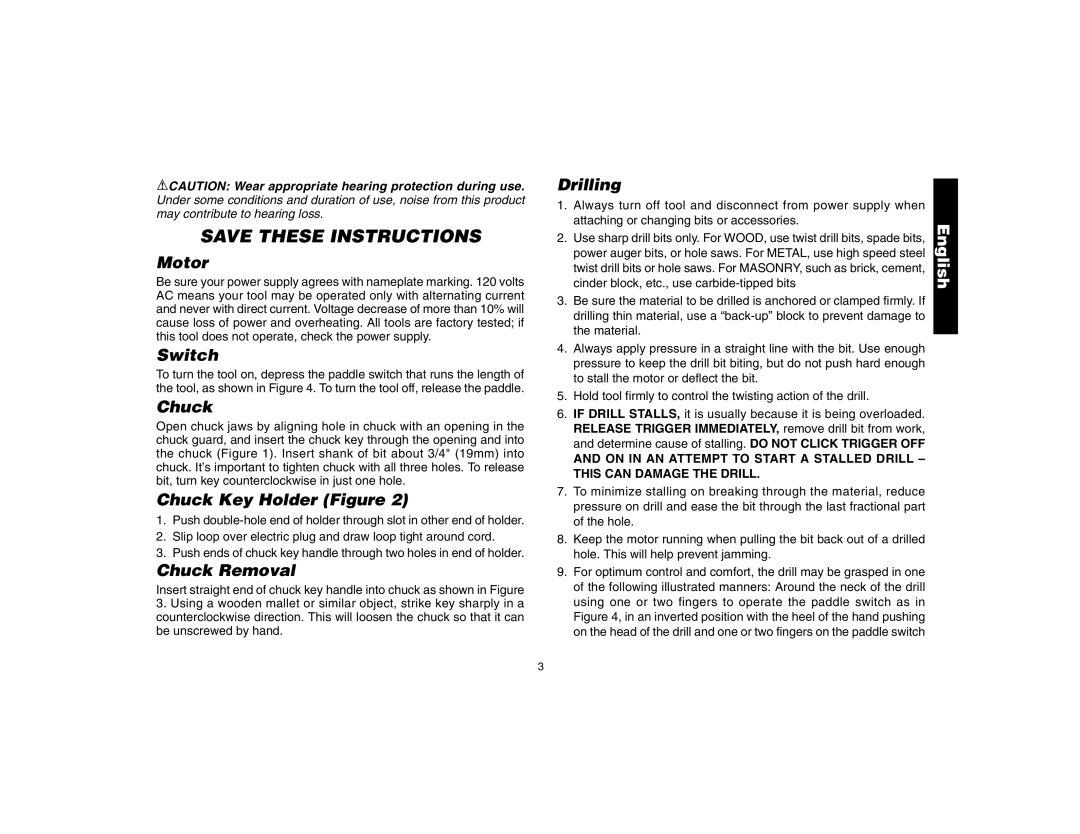DW160, DW161 specifications
The DeWalt DW160 and DW161 are two standout models in the brand's vast lineup of power tools, specifically engineered for professionals and serious DIY enthusiasts who demand efficiency, durability, and precision in their tasks. Both tools showcase DeWalt's commitment to innovation, performance, and user comfort, making them essential additions to any toolbox.The DeWalt DW160 is a versatile electric drill designed for heavy-duty drilling tasks. Its powerful motor generates impressive torque, enabling it to handle a variety of materials such as wood, metal, and plastic with ease. One of the standout features of the DW160 is its variable speed control, allowing users to adjust the drilling speed to suit the specific application. From delicate tasks requiring finesse to robust drilling activities, this feature enhances control and effectiveness.
In addition to its impressive power, the DW160 incorporates a keyless chuck that allows for quick and easy bit changes. This facilitates efficient work, reducing downtime and maximizing productivity on the job site. The ergonomic design of the handle ensures comfort during extended use, significantly minimizing user fatigue.
On the other hand, the DeWalt DW161 is a premium model that elevates the performance profile with added features and technologies. It boasts a similar robust motor but is further enhanced with a built-in electronic clutch system that prevents damage to both the tool and workpiece by providing additional control during drilling. This feature is particularly advantageous when working with various materials that require distinct torque settings.
The DW161 also includes an integrated LED work light, illuminating dark work areas and enhancing visibility for precise drilling. This is especially practical for work in dimly lit locations, ensuring users can maintain accuracy without straining their eyes. The durable construction of the tool is another highlight, designed to withstand tough job site conditions and deliver reliable performance over time.
Both models are equipped with DeWalt’s proprietary technologies aimed at prolonging the life of the tool and enhancing safety. For instance, they include overload and overheating protection, ensuring optimal operation without compromising user safety.
In summary, the DeWalt DW160 and DW161 represent the pinnacle of drilling technology, combining powerful motors, variable speed controls, and ergonomic designs with features that cater to the professional user's needs. Whether tackling heavy-duty applications or precise tasks, both tools deliver exceptional results and stand as a testament to DeWalt’s legacy of quality and innovation in the power tool industry.
